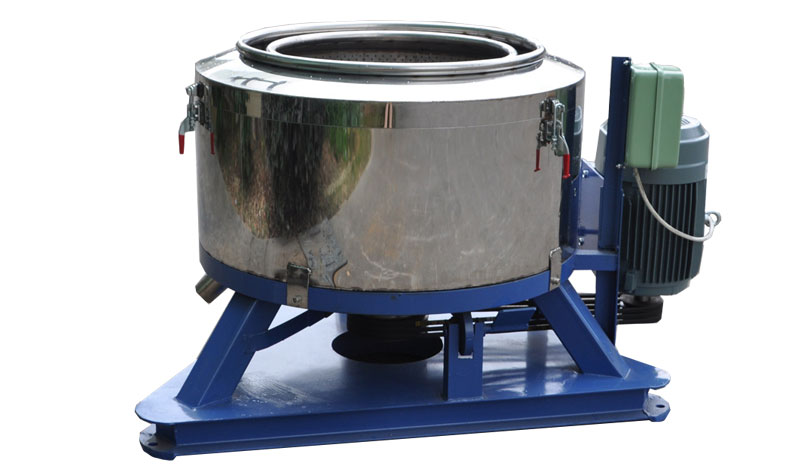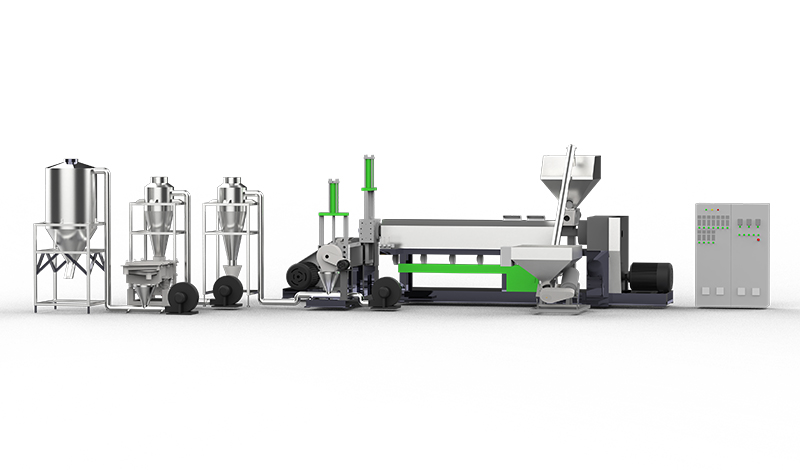

Contact us

Working principle of centrifugal dehydrator and precaut […]
Working principle of centrifugal dehydrator and precautions for use
The centrifugal dewatering machine is mainly composed of transfer and a screw conveyor with a hollow shaft. After the sludge is sent into the drum by the hollow shaft, it is immediately thrown into the cavity of the drum under the action of the centrifugal force generated by the high-speed rotation. The sludge particles have a large specific gravity, and the resulting centrifugal force is also large, and they are thrown onto the inner wall of the hub to form a solid layer; the water density is small, and the centrifugal force is also small, and only a liquid layer is generated inside the solid layer. The sludge in the solid layer is slowly driven by the screw conveyor to be transported to the conical end of the transfer, and continuously discharged through the outlet around the transfer. The liquid is discharged from the weir to the outside of the transfer, and is discharged out of the dewatering machine after being collected. The most critical component of the solar water heater brand centrifugal dehydrator is the rotating hub. The larger the diameter of the rotating hub, the greater the dehydration processing capacity, but the manufacturing and operating costs are quite high, which is very uneconomical. The longer the reprinting length, the higher the solid content of the sludge, but too long reprinting will reduce the cost-performance ratio. In the process of use, the reproduced speed is an important control parameter. Controlling the speed of the rotating hub so that it can obtain a higher solid content rate and reduce energy consumption is the key to the operation of the centrifugal dehydrator. At present, low-speed centrifugal dehydrators are mostly used. When selecting the centrifugal dewatering machine, because the outer edge of the runner or spiral is very easy to wear, there are special requirements for its material. Most of the spiral outer edges of new centrifugal dehydrators are made into assembly blocks for easy replacement. The material of the assembly block is generally tungsten carbide.

Precautions for the use of centrifugal dehydrator
First, the operator must be familiar with the structure, performance and operation methods of the centrifugal dehydrator.
Second, turn the revolver for a few revolutions before starting up, and check whether the revolver is running normally.
Third, put the materials that need to be dehydrated into the steamer evenly and evenly, and pay attention to balance, so as not to overweight and cause excessive vibration of the machine, and be careful not to overload.
Fourth, about 90 seconds after turning on the motor, the machine can reach normal operation, and the outlet pipe starts to discharge a large amount of water.
Fifth, the machine runs for about 6-8 minutes, and there is basically no water outflow from the outlet pipe. At this time, the power can be cut off. After another 1-2 minutes, the opening and closing arm brakes are slowly braked several times, and the machine stops.
Sixth, it is important not to input materials during the operation of the machine, so as to avoid the high-speed rotating drum from throwing the materials out of the surrounding people and objects.
Seventh, once an abnormal phenomenon is found during operation, the power supply should be cut off immediately, and the brake should be stopped for inspection.
Eighth, no items can be placed on the top cover to avoid accidents after the machine is turned on.
Ninth, if there is ice water, freezing or hard substances in the drum, the centrifuge cannot be started.

Copyright © Yuyao Lvdao Plastic and Rubber Machinery Co.,Ltd. Plastic Granulation Line Supplier 浙ICP备11026885号-3



